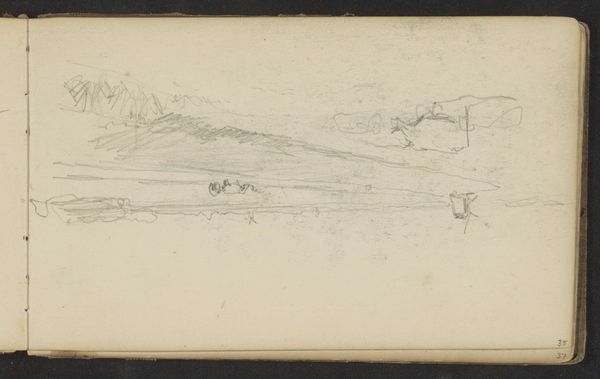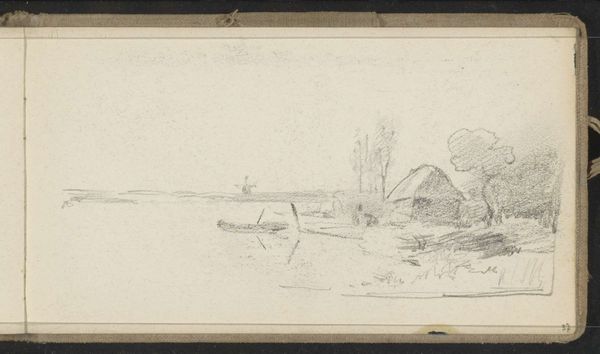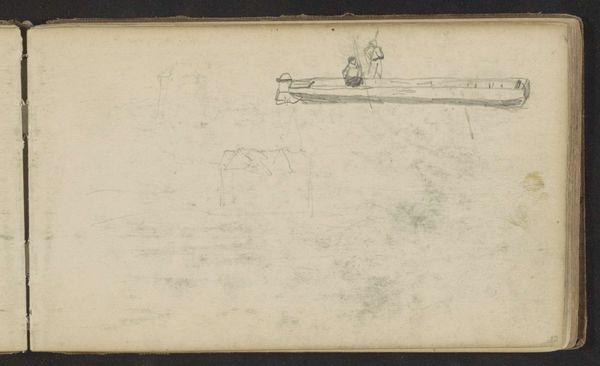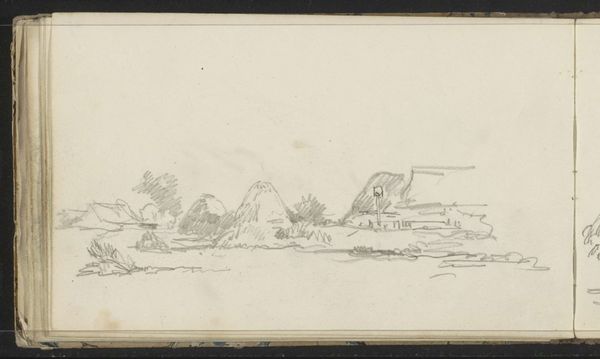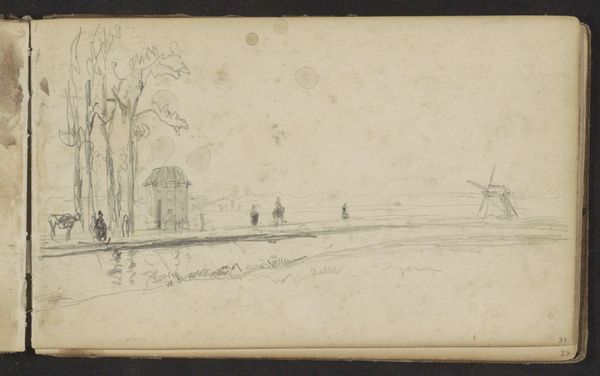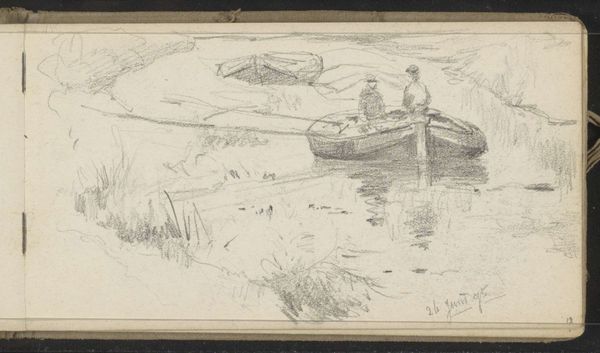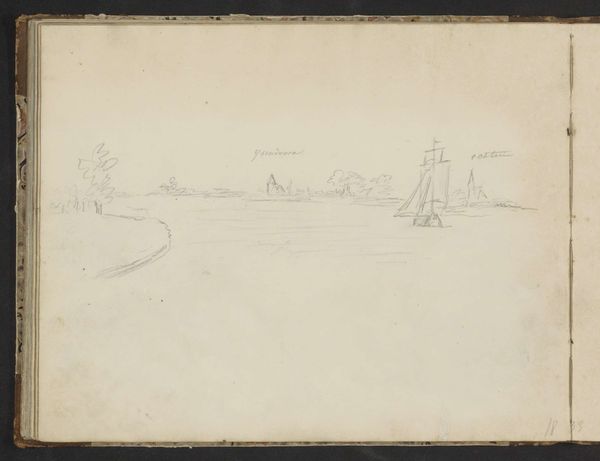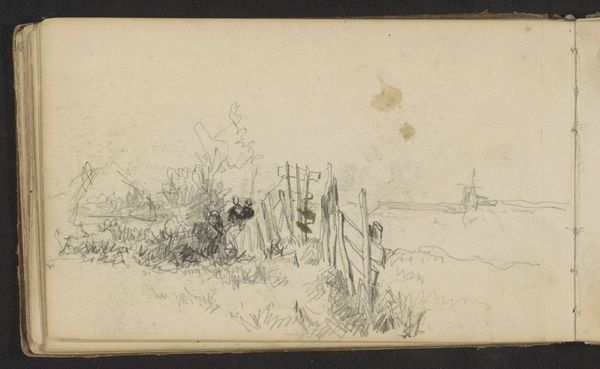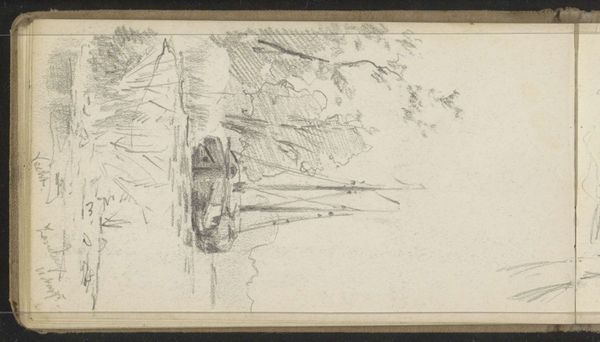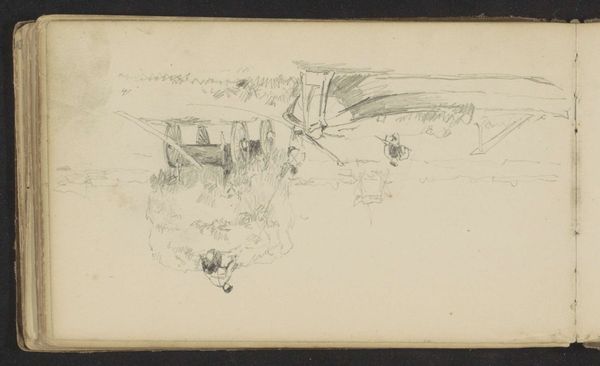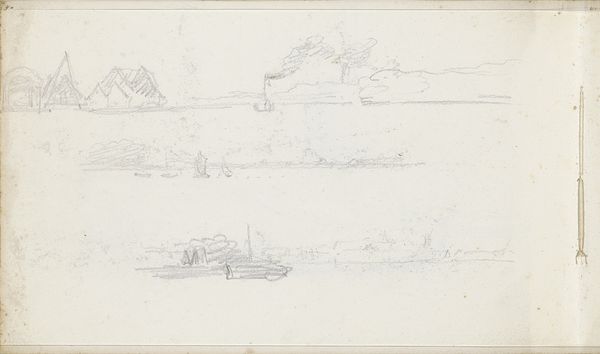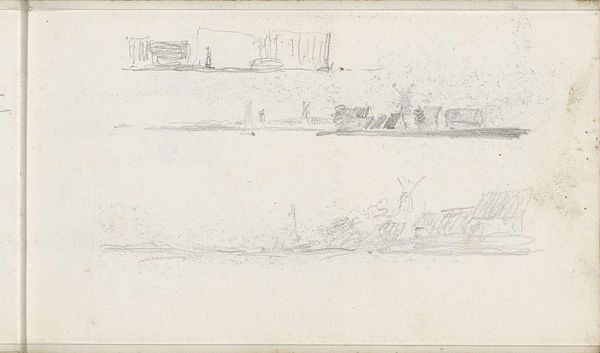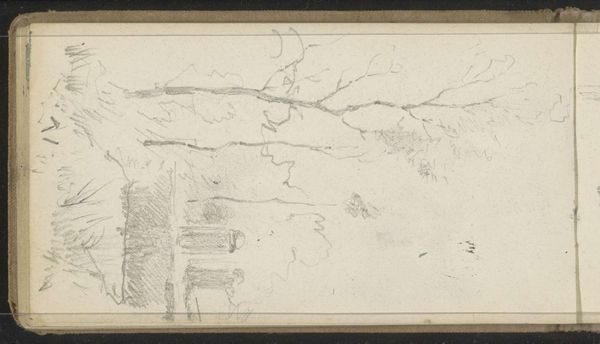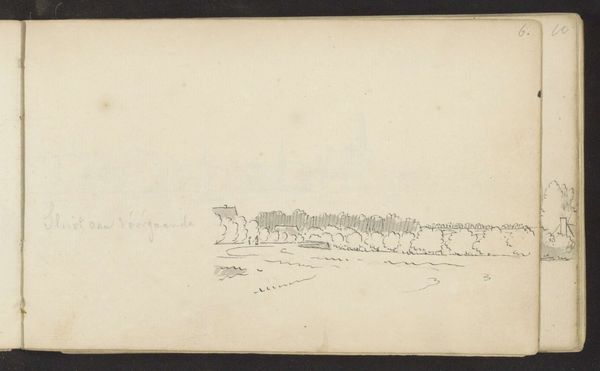
Copyright: Rijks Museum: Open Domain
Curator: This is "Man with sailboat on a boat", a pencil drawing on paper created by Johan Hendrik Weissenbruch sometime between 1834 and 1903, and currently held in the collection of the Rijksmuseum. Editor: Immediately striking is the simplicity and stillness. The almost monochrome palette evokes a tranquil, perhaps melancholic mood. The composition feels balanced, even with the stark emptiness around the boat itself. Curator: What I find compelling here is the suggestion of the landscape emerging through a working process, like so many drawings on sheets of paper by Weissenbruch who repeatedly engaged with representing this landscape. How the rapid lines, quickly sketching the contours of the boat, man, and water, give the viewer a clear sense of place. Editor: Absolutely. And it’s that interplay of light and shadow, rendered through varying pencil pressures, that breathes life into the scene. See how he defines the shape and texture of the boat solely with shadow? The diagonal of the pole used by the figure provides spatial tension too. It gives depth and dynamism to the composition that’s really interesting. Curator: Yes, but let's think about the conditions of producing landscape artworks such as this in 19th century Netherlands. Artists began depicting laborers engaged in leisurely boating on public waterways during a time that the country had transitioned to capitalism and the state. Weissenbruch likely witnessed increasing industrialization of natural waterways for commercial reasons that created social tension among those using waterways. It isn't as simple as a study of a man and his boat—rather a suggestion that industry comes into contact with traditional work that required boats. Editor: That context certainly enriches the narrative, adding layers of social commentary to what appears, at first glance, like a serene scene. Curator: Precisely. We see here the impact of labor on material production: the work done on the boat, how the pencil markings convey shape and volume... all these formal considerations have connections to actual historical factors that gave context to Weissenbruch's landscape depictions. Editor: It’s fascinating how our perspectives converge; what I see as formal brilliance echoes those socio-economic realities that framed its creation. Curator: Indeed, we can find art’s meaning, sometimes where the pencil meets the historical moment. Editor: I appreciate your approach to reading social context. I learned something about pencil rendering techniques that add shape in art, here.
Comments
No comments
Be the first to comment and join the conversation on the ultimate creative platform.
